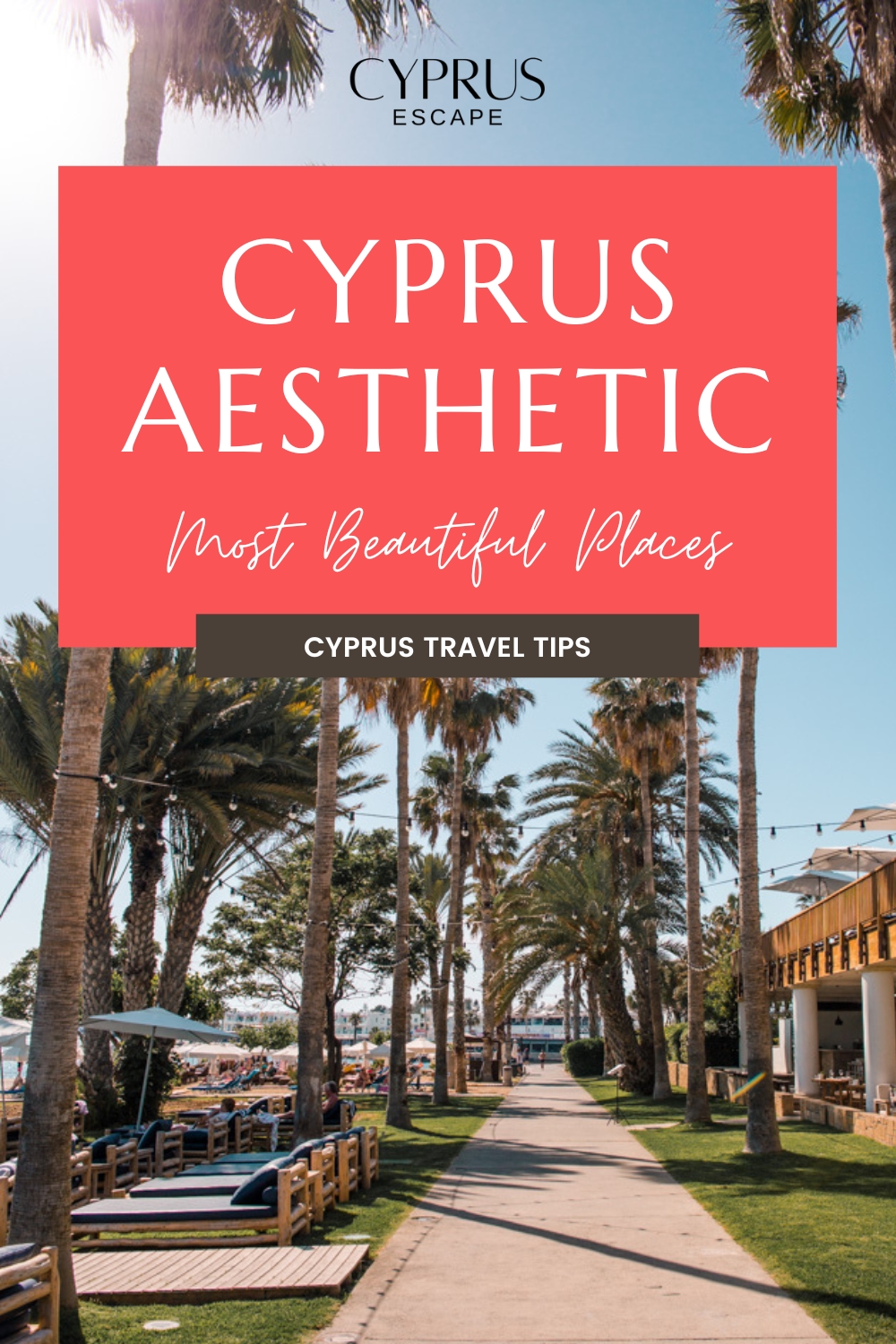Cyprus aesthetic is much more than pristine beaches, old historic villages or beautiful mountains. In this article, you will get the full picture of what makes Cyprus one of the most beautiful places in the Mediterranean.
Cyprus, often referred to as the island of love and beauty, beckons with its sun-kissed beaches, azure Mediterranean waters, rugged mountain terrain, and distinct cultural heritage.
This quintessential Mediterranean jewel is more than just a beach-goer’s paradise; it’s an enchanting blend that mixes modern European culture with ancient enchantment.
Sculpted by history and tradition, Cyprus exudes a charm that transcends time.
From the romantic legend of Aphrodite’s birthplace to the beguiling old world charm of its small villages; from the majestic Byzantine churches nestling serenely in its mountains to its ancient Roman amphitheaters by the sea, every nook and corner of this island whispers stories of love and beauty.
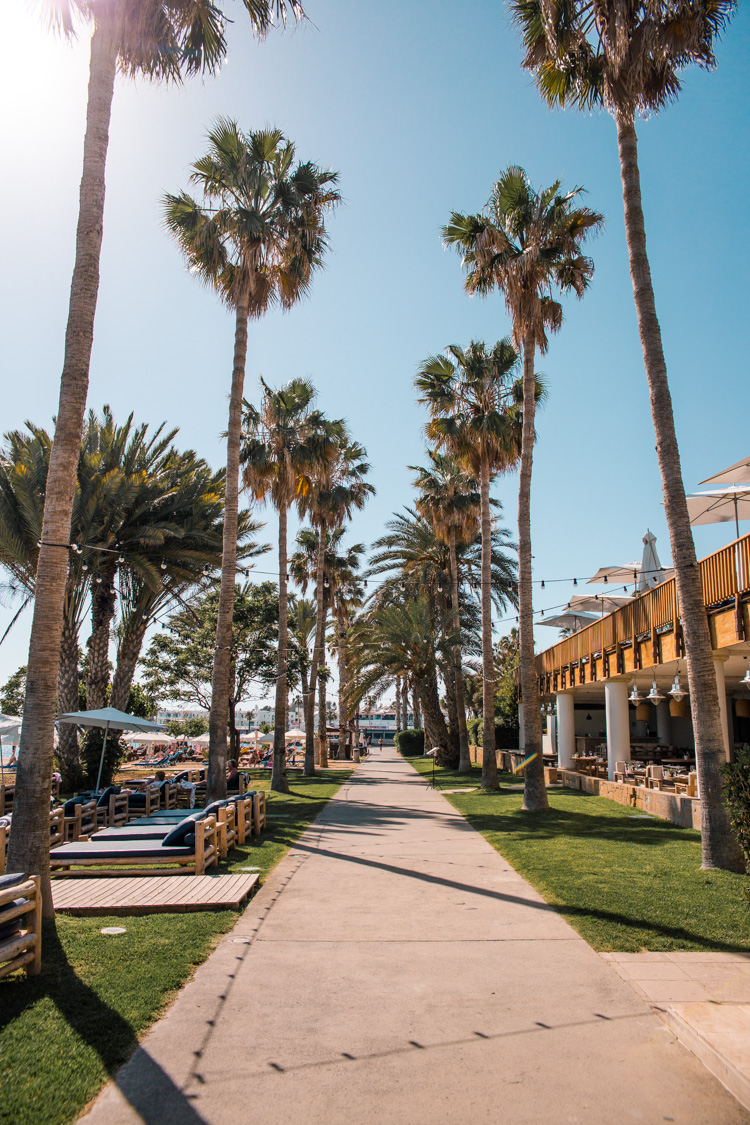
Cyprus Aesthetics in a Local Context
To truly understand Cyprus’s aesthetic allure, we need to delve into what aesthetics means in this context.
Broadly defined as a set of principles concerned with appreciation for beauty or art, aesthetics is deeply woven into every aspect – natural or man-made- that constitutes Cypriot charm.
In terms of natural aesthetics, think serene beaches kissed by sunsets that paint the sky with hues ranging from pastel pinks to fiery oranges; vineyards rolling over verdant hillsides producing vintages savored worldwide; mountainsides flourishing with aromatic herbs like oregano or thyme.
Then there’s architectural aesthetics: Byzantine edifices cohabiting alongside Venetian fortifications or British colonial buildings – each narrating their own tale about epochs gone by in Cypriot history.
Aesthetics also find a voice in authentic Cypriot experiences – be it through traditional handcrafts like lacework or pottery; native music and dance forms; or local gastronomy offering a rich cornucopia of flavors.
In essence, the aesthetic in a Cypriot context is an inexhaustible feast for the senses, creating an indelible impact on the beholder’s heart and soul.
To fall under Cyprus’ enchanting spell is to experience these aesthetics first-hand.
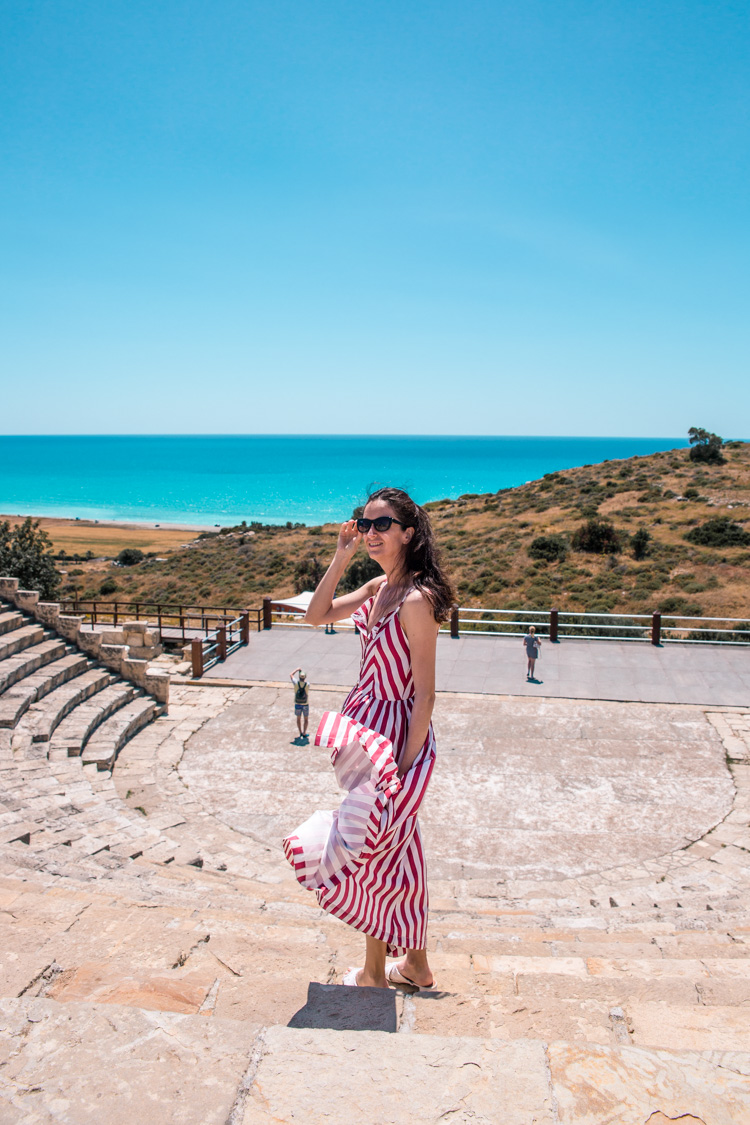
Cyprus Aesthetic in Nature
The Beaches: More Than Just Sand and Sea
When one conjures images of Cyprus, azure waters washing against sun-kissed shores invariably dominate the imagination.
The beaches of Cyprus are indeed a stunning spectacle, but they are far more than just swathes of sand caressed by the sea.
They serve as sanctuaries for nesting turtles, as well as playgrounds for various water sports enthusiasts.
Every grain tells a tale – from the fiery white sands of Nissi beach in Ayia Napa to the unique grey sands in Governor’s beach near Limassol.
The ebullience and exuberance that pervades these sandy stretches is palpable.
Each beach fosters an ambiance that is uniquely its own – some cradle calmness and serenity while others pulsate with energy and vibrancy.
Some beaches like Lara Bay offer tranquillity away from bustling crowds, while others like Fig Tree Bay embody social interaction and communal joy.
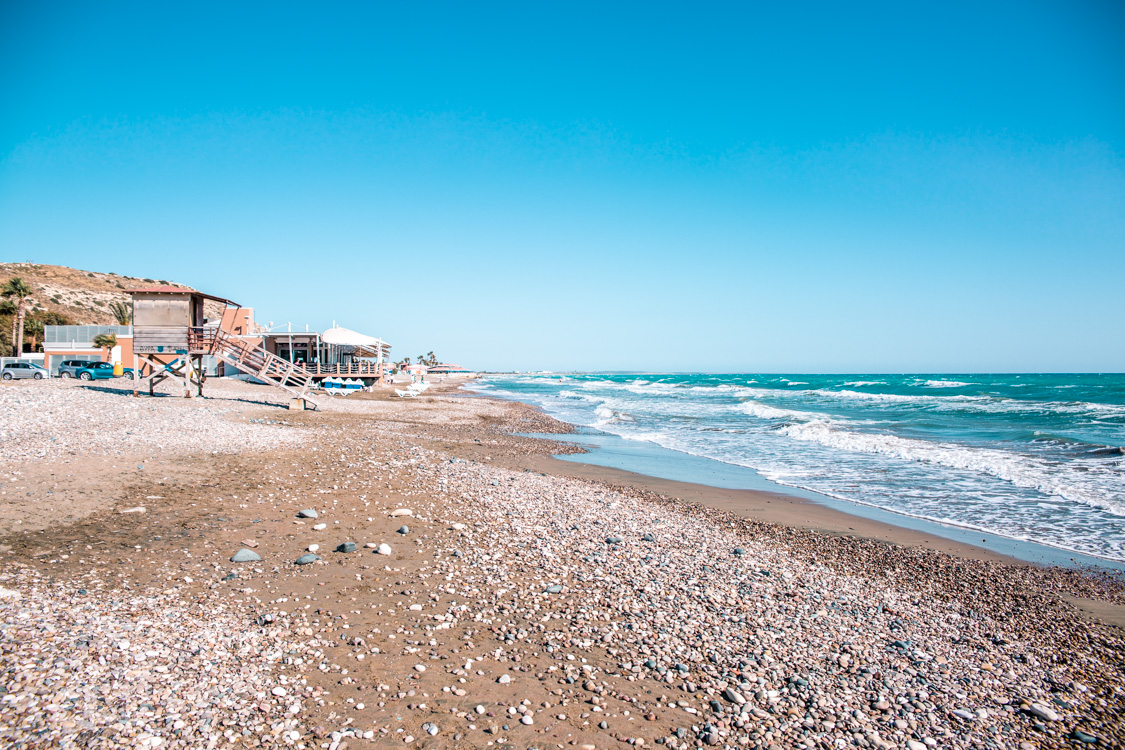
Troodos Mountains: Majestic Peaks and Lush Greenery
Rising resplendently above the island’s coastal contours, the Troodos mountains offer an entirely different facet to Cyprus’ aesthetic charm.
A verdant paradise adorned with fragrant pine trees, chirping cicadas, babbling brooks and cascading waterfalls creates an enchanting symphony of nature that resonates deep within your soul.
Visiting Troodos is akin to embarking on a treasure hunt – hidden amidst this topographical tapestry are picturesque villages drenched in tradition, Byzantine churches punctuating spiritual solace into serene surroundings, wineries offering tantalizing tastes and trails beckoning you towards captivating encounters with nature!
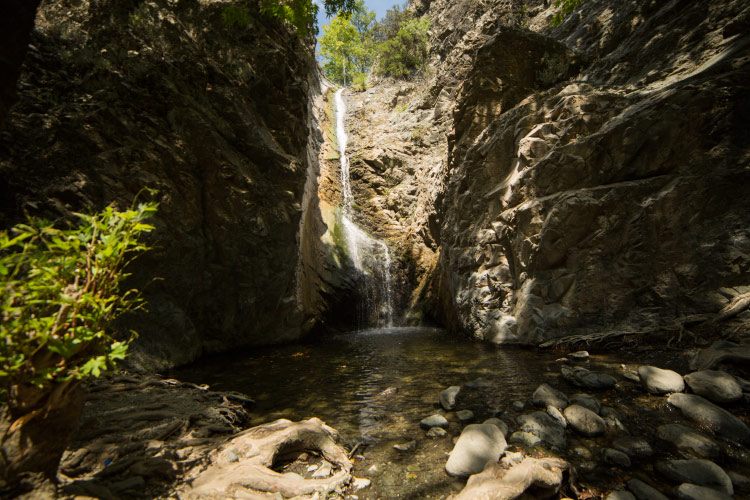
Flora and Fauna: Unique Species that Add Color to the Landscape
Cyprus’ location, climate and variegated landscapes have fostered a rich biodiversity.
The island is adorned with an impressive array of flora – from endemic species like the Cyprus Tulip and cyclamen to fragrant herbs such as thyme and sage, all adding vibrant hues and refreshing scents to the landscape.
Springtime in particular transforms Cyprus into an artist’s palette with a riot of colors coming alive.
The fauna too, is equally fascinating.
From the mouflon – an emblematic creature that wanders freely in Paphos Forest, to the fluttering butterflies of Akamas peninsula; from chirpy birds flitting about citrus groves to sea turtles hatching on protected beaches – each creature big or small contributes its own unique brushstroke to this living masterpiece that is Cyprus.

Cyprus Aesthetic in Architecture
Byzantine Architecture: An Ode to the Divine
The Byzantine period has etched itself indelibly into the heart of Cyprus aesthetic when it comes to architecture. Churches and monasteries from this era, scattered across the island, serve as silent witnesses to a time when art was synonymous with devotion.
For instance, the Church of Saint Lazarus in Larnaca is an exemplar of exquisite Byzantine architecture.
Its building design, characterized by thick walls, small windows and simple yet elegant geometric shapes, mirrors a deep reverence for divine mysteries.
The interior decor of these buildings often features stunning frescoes.
These intricate murals depict religious scenes with a remarkable depth of emotion and spiritual intensity. Testament to this is the Kykkos Monastery with its frescoes that are thought-provoking tapestries in color – weaving together tales of faith and devotion.
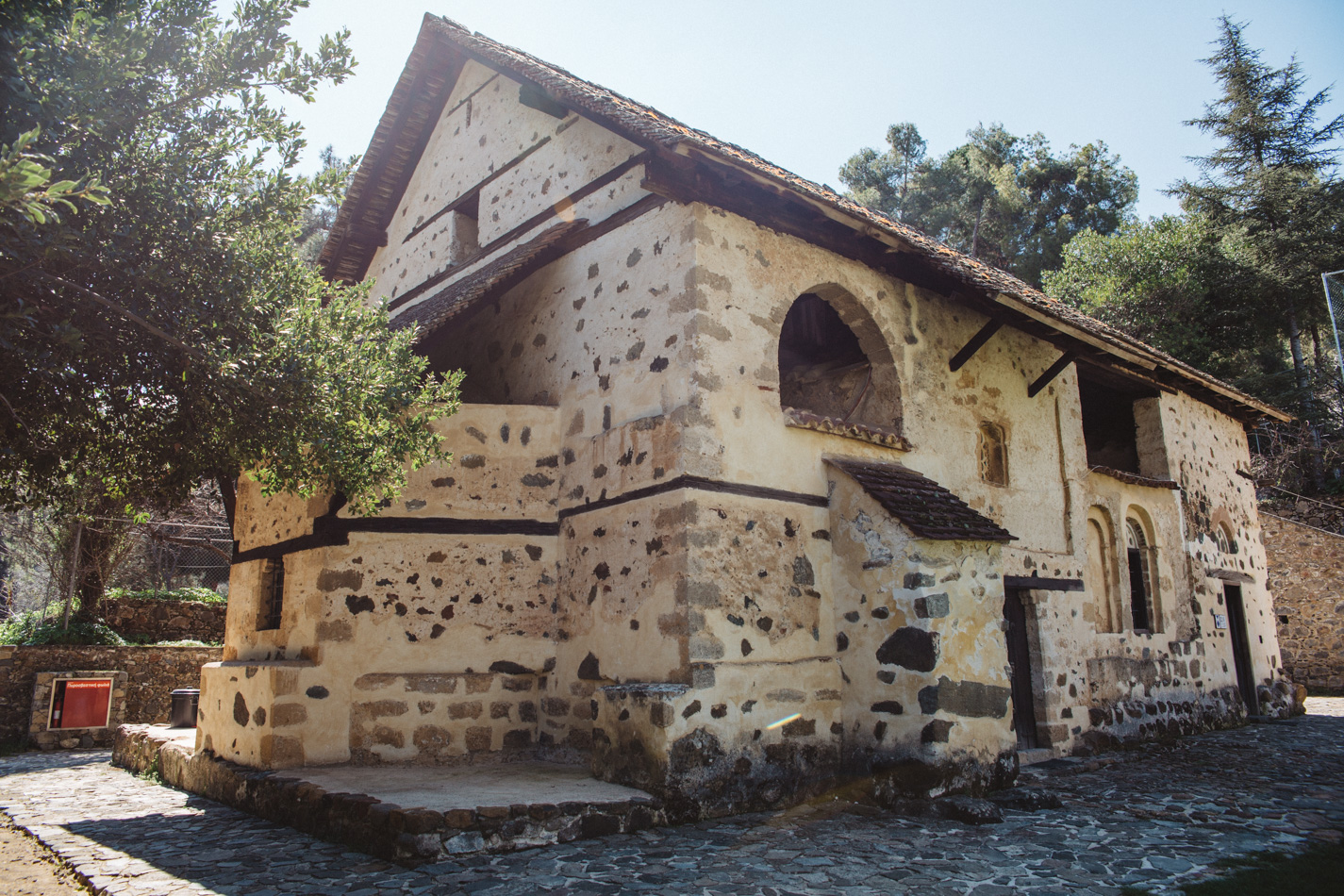
Venetian Walls and Ottoman Baths
Cyprus’ timeline extends well beyond Byzantine influence – its history has seen the ebb and flow of various empires leaving their mark on its architectural canvas.
The impressive Venetian Walls surrounding Nicosia bear testament to this epoch. More than just fortifications, these walls embody an ingenious design approach that balances artistic grace with defensive practicality.
Not far behind are Ottoman remnants which pervade Cypriot architecture – striking bathhouses being prime examples.
Modern Cypriot Architecture
Cypriot architecture today tells an ongoing story – one that harmoniously blends tradition with innovation.
While modern urban constructions may present a veneer of steel and glass, the heart retains a deep-rooted respect for the island’s architectural heritage.
Renowned Cypriot architects, such as Neoptolemos Michaelides and his protegé Christos Paphitis, have made significant strides in this direction.
They employ traditional materials like local stone and wood in contemporary designs – a nod to Cyprus’ past while embracing global architectural trends.
The rising popularity of green architecture also adds an environmental consciousness to Cyprus’ architectural narrative – reinforcing the island’s inherent bond with nature and its commitment towards sustainability.
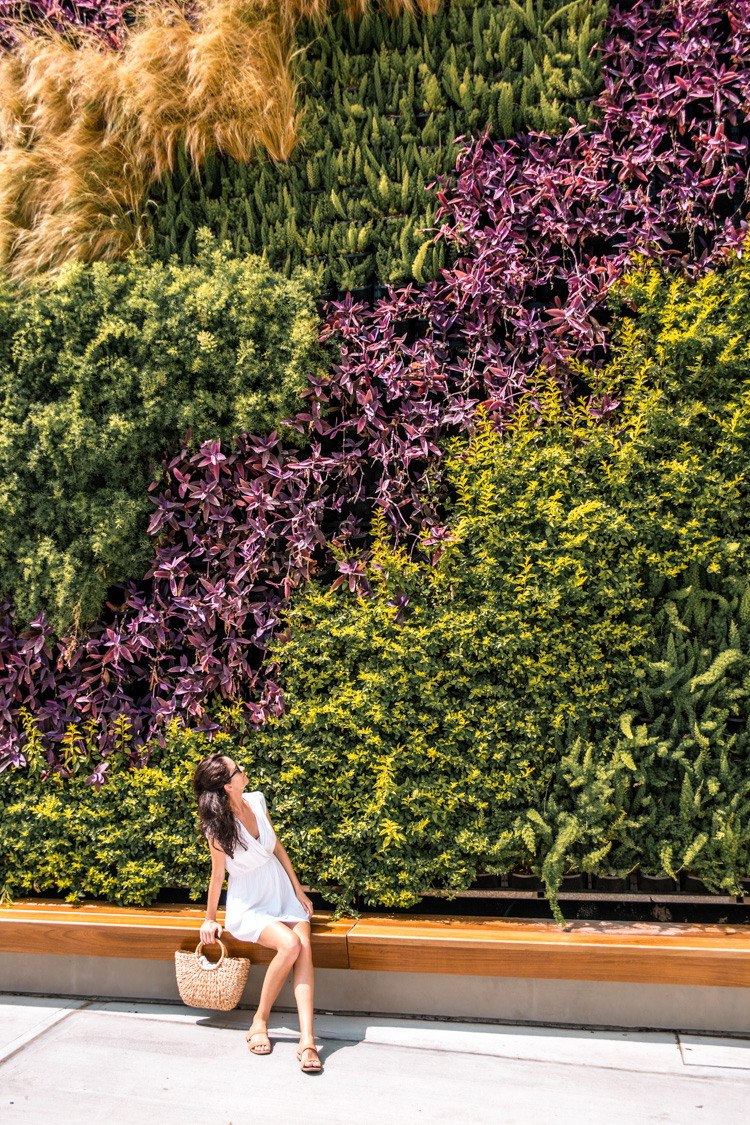
Cyprus Aesthetic in Mythology
When you journey through the canvas of Cyprus, the indelible mark left by Greek culture is as palpable as the sea air.
From mythology to modern times, this Hellenic ethos has shaped much of the island’s aesthetic.
Epitomizing this Greek influence are the multitude of archaeological sites that speak volumes about their ancient civilization.
The remains of Kourion city with its majestic Greco-Roman theatre or Aphrodite’s Rock where the Goddess of Love herself is said to have been born from foam – each bearing testament to a time when Gods and mortals walked hand in hand.
The imprint of Greece also shines through in Cyprus’ everyday life – from language and traditional dances like ‘Sirtaki,’ right down to gastronomic delights such as Souvlaki and Tzatziki that constitute an integral part of Cypriot cuisine.
Every bite into these delicacies transports you to a Mediterranean taverna under an azure sky, forging an undeniable connection between taste buds and tradition.
The British Legacy in Cyprus
The British Empire left an indelible mark on Cyprus, one that is still visible today in the island’s architecture and lifestyle.
The colonial-era buildings scattered across Lefkosia (Nicosia), Limassol, and Paphos radiate an old-world charm – their sandstone walls and arched verandas serve as architectural memoirs of a time when Britain ruled this Mediterranean jewel.
Particularly charming are the British-built railways and stations, like those found in Evrychou village; these relics are nostalgic reminders of a bygone era.
Moreover, it’s not just architectural remnants that survive.
The Cypriot penchant for high tea with scones or driving on the left side of the road can all be traced back to its erstwhile rulers.
Additionally, English remains widely spoken across the island – a linguistic legacy etched into everyday life which has helped shape modern Cypriot culture while adding another layer of depth to its multifaceted beauty.
Cyprus Aesthetic in Artistic Expressions
Unraveling the Tapestry of Cypriot Handicrafts
Every culture possesses a unique artistic language that narrates its history, traditions, and spirit. In Cyprus, this is beautifully expressed in their rich handicrafts.
The intricate Lefkaritika lacework is one such example.
This delicate craft, fashioned on linen with complex geometric patterns and nature-inspired motifs, is more than mere decoration; it’s an age-old tradition passed down generations and recognized by UNESCO for its cultural significance.
Cypriot pottery also bespeaks the island’s rich history.
With techniques shadowing those used in the Neolithic period, Cypriot potters create earthenware that marries functionality with artistry.
Each pot tells a tale of the island’s past civilizations – whether it’s carrying water from springs or preserving grains for winter months.
Basketry has been a part of Cypriot life since time immemorial.
Woven from reeds or rushes into functional shapes like baskets for harvest or fans to stoke kitchen fires – these creations are testament to the artistic ingenuity that thrives amidst everyday life in Cyprus.
The Vibrant Cypriot Art Scene
The visual arts domain in Cyprus is a perfect blend of traditional expressions and contemporary innovations.
Orthodox religious painting has deep roots on the island, with churches showcasing timeless frescoes dating back to Byzantine times.
Modern art also holds sway here with vibrant exhibitions often held at Nicosia’s municipal arts center or Limassol’s Rialto Theater among others.
These offer platforms for local artists to express their creativity through various mediums like sculpture installations or digital art forms.
This mingling of the old and new creates a dynamic art scene that is constantly evolving, beautifully emblematic of Cyprus’s transformative journey over centuries.
The Rhythms of Cyprus
Music and dance form the soul of Cypriot culture.
Traditional folk music echoes in every town square or village festival, sung to the accompaniment of bouzouki – a stringed instrument similar to a mandolin.
Dances like Sousta, Zeibekiko, or Sirtaki showcase cheerful energy and deep-rooted community bonds. But alongside these age-old traditions thrives a modern pop culture inspired by both Greek and Western influences.
Several Cypriot musicians have achieved international acclaim, bringing contemporary Cypriot music to global platforms.
From Eurovision to indie pop festivals – Cypriot melodies reverberate far beyond their island borders – truly symbolizing this nation’s harmonious blend of tradition with modernity.
Cyprus Aesthetic in Culinary World
Meze, Halloumi Cheese, Souvlaki
The Cypriot culinary landscape is an enchanting journey of flavors, with traditional dishes that reflect the island’s rich history and cultural diversity.
At the forefront are Meze, a medley of small dishes served as appetizers or a main course in itself.
These can range from dips like Tzatziki and Taramosalata to grilled meats and seafood, all garnished with local herbs.
Every gastronome’s journey to Cyprus would be incomplete without tasting the world-renowned Halloumi cheese.
Traditionally made from a mixture of goat’s and sheep’s milk, this semi-hard, unripened brined cheese has a unique texture that doesn’t melt when heated. It is often served grilled or pan-fried in olive oil.
Souvlaki – skewered meat marinated in olive oil, lemon juice and oregano – is another cornerstone of Cypriot cuisine. Cooked over charcoal for that smoky flavor, it’s enjoyed with freshly squeezed lemon juice.
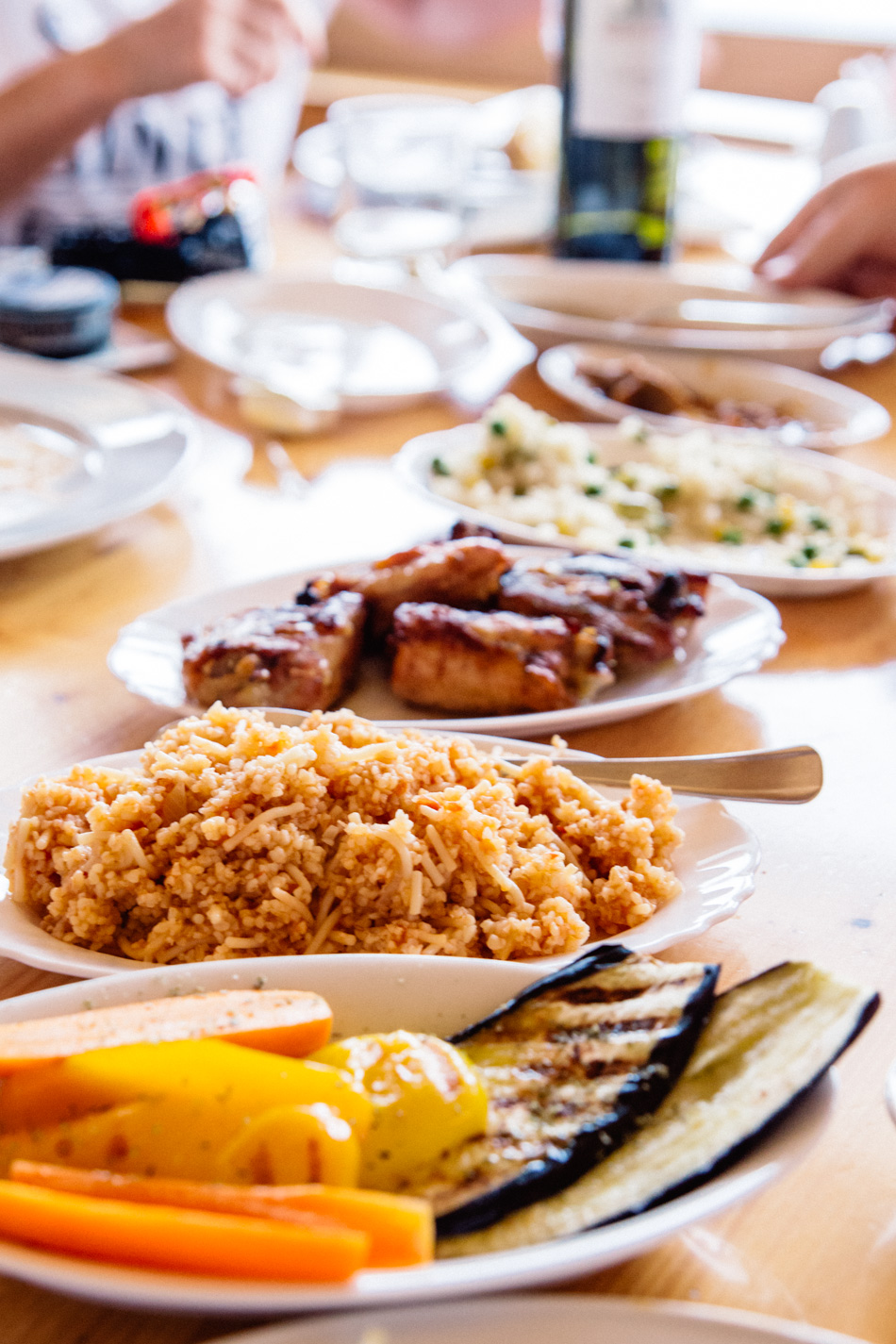
Commandaria Wine & Zivania Spirit
Cyprus has been producing wine for over 5000 years – making it one of the oldest wine-producing countries in the world!
The Cypriots have perfected their winemaking craft over millennia; Commandaria wine embodies this heritage beautifully.
Known as “the wine of kings,” its lineage can be traced back to ancient times when knights would indulge in this sweet dessert wine after feasts. Zivania spirit is another quintessential Cypriot beverage worth trying.
It’s a potent grape-based pomace brandy made by distilling grape marc (the residue of the wine press) and local dry wines. It’s traditionally served icy cold and packs quite a punch.

Conclusion
The aesthetic allure that embraces every corner of Cyprus is a testament to its historical journey, multi-layered culture, and distinctively beautiful natural landscapes.
Cyprus aesthetic isn’t merely confined to visual appeal but extends to an embodiment of depth told through intricate architectural designs, vibrant art scenes, tantalizing cuisine and captivating fashion trends steeped in tradition.
Immersing oneself in these facets not only enriches one’s senses but also paints an intriguing picture – one that harmonizes past influences with present sensibilities against an idyllic Mediterranean backdrop.
It’s clear that aesthetics runs deeper than just surface value in Cyprus—it is entrenched into its very soul.
So here’s to experiencing beauty beyond seeing … here’s to feeling it in every Cypriot heartbeat.
LOVE it? PIN it for Later
